解析2D射击游戏设计的压迫和漏斗理论
游戏邦注:本文原作者是昆士兰数位媒体学院的游戏设计理论讲师Luke McMillan,他以传统的2D射击游戏为例,阐明了压迫和漏斗理论在游戏中的运用。
环境导向游戏的RLD模型
就同期关卡设计的合理方法而言,视线是关键指标,这个观点被广泛承认和运用。这个观点的主要含义是,玩家的视线区域越大,玩家对特定场景的控制力越强,从而更容易通关。反之,玩家会抱着犹豫不决的心态,从而加大了特定场景的通关难度。《毁灭战士3》中的密闭空间和闪光灯,就是运用这个理论原则的典例。封闭而狭窄的通道使玩家的视线范围非常有限,玩家的神经随之紧绷;由于有限的隐印时间与受限的视线,玩家更难应付敌人。
压迫和漏斗理论的两个关键指标是入口和限光器。根据摄像机的位置,截面和视角,入口相应地增大玩家的视线,同时限光器会限制玩家的视线。在图1是取自Byrne的书《Game Level Design》。此图从技术层面充分展示了这个概念——然而,游戏世界呈现给玩家的可不是这么一回事。
在几乎所有的第一人称游戏和部分第三人称3D游戏里,摄像机相当于玩家的游戏角色(至少定位得相当接近)——如图2所示。同时,图2也表现了在入口和限光器原理的前提下,玩家最多能看到的游戏场面。
虽然并非所有游戏都是3D的,且在当前的手机游戏市场,2D游戏更走俏。考虑到这点,我们还是从传统的2D上下视角游戏出发,重新考虑入口和限光器的定义。图1表现的是当游戏世界被屏幕角色抽象出来时,入口和限光器所起的限制作用,此时的游戏世界不会被屏幕上的遮蔽物所限,这不同于图2所示。在角色导向型的2D游戏里,入口就是屏幕本身,遮光板就是屏幕的实物框架。
在这时候,压迫和漏斗的概念不失为合理设计入口和限光器的另一种选择。压迫和漏斗是合理关卡设计的原则,合理关卡设计研究的是屏幕上的因素(例如敌人、环境物品、弹幕阻击和其他冲突对象)如何运用于提升游戏难度及激发玩家的强烈情绪。
生产之痛概念和Shmup原理
在探讨压迫和漏斗理论的应用前,为了不遗漏玩家情绪这个因素,有必要解释下生产之痛概念的起源。压缩和漏斗的概念源自对游戏《R-Type》(此作由Irem公司于1987年发行)的观察。《R-Type》是一款传统的侧边滚动Shmup游戏,该游戏里随处可见瑞士艺术家H.R. Giger式的美学设计。强大的游戏设计,激起了玩家强烈的反响。
为了明白这个概念,我们必须知道Shmup(游戏邦注:Shoot ‘em up,射击类电子游戏的一个亚种),特别是水平Shmup是如何运作的。Shmup有一个连续的滚动状态,不断地把玩家逼进更困难更紧张的空间内,逃脱的唯一方法就是通关。就这一点而言,《R-Type》这类游戏的游戏运动状态与人类分娩的过程颇有相似之处。Freud认为分娩的疼痛在日后的焦虑症里扮演着重要角色,然而,他之后又摒弃了这个理论。但后来的心理学家,如Otto Rank等,并没有停止探索生产的过程及其在成长过程中的作用。Grof(2002)讨论了分娩的第二个阶段,其描述如下:
在分娩的第二阶段,子宫收缩不断推挤胎儿,而膨大的子宫颈慢慢把胎儿推过产道。与前一阶段不同,重新体验这个阶段不仅与受害者角色的特定识别无关,反而释放了大量曾被压抑着的残暴攻击性。
从这个描述里我们可以得知两个要点,一是无论出生创伤的定义在心理学上是否重要,人总是不想被压迫的,二是一旦被压迫,我们会很自然地奋起反抗。在《R-Type》这类Shmup里,我们可以轻易识别这些相似点。这种类型的游戏迫使玩家进入密封的空间,且唯一的逃脱这些局面、摆脱压迫力的方式就是毁灭它们、消除它们。关于这个论点,还有相当多的信息超过了实践范围,这点值得关注。然而,对于解释以下实例,已知的信息绰绰有余了。
从理论到实践
知道这个理论的来龙去脉后,现在可以演示这个定义的实际蕴涵。随着手机游戏的兴起,Shmup类游戏广受欢迎,因此在Shmup类游戏的范围内阐明这个定义是比较合适的。因为这是一种合理的设计方法,在进行下一部分内容探讨前有必要识别几个重要指标。
为了应用压迫和漏斗理论,我们必须理解与不同接近向量有关的难度指标。我再次以《R-Type》为例。在图4中,主轴即主发射轴——玩家角色受到的弹幕阻击就是沿着这条轴。一般情况下,玩家比较容易解决迎面而来的敌人或其他压迫因素(绿色箭头表示)。正斜方向是中等难度(黄色箭头),最难对付的是与主坐轴相对的来袭(因为玩家通常不知道怎么应对这种情况)。
如果你弄懂了这种接近向量是怎么回事,你就会理解它们如何压迫玩家。基本上游戏中的冲突对象都可以当作一种压迫介质。在Shmup类游戏里,我们有许多显而易见的例子:
1.环境
2.弹幕阻击
3.敌人
环境压迫
图5是《R-Type 3》中的一个环境压迫的例子。在图中,玩家的意向移动方向用绿色箭头表示;压迫因素以红色箭头表示。所有例子都是固定滚动的,所以玩家不断地被迫进入不利的位置。这些屏幕截图是以时间顺序排列的,我们可以从中看出,最初玩家被迫通过一个小漏斗点。漏斗通道与压迫稍微不同,因为直截了当的漏斗点通常对玩家有利——把敌人移动到一处瓶颈区,然后轻松解决掉。在图5的第三部分,环境压迫起作用了。玩家被迫躲在壁架之下,这个壁架随后将顺着玩家垂直接近向量崩塌。当被迫向前时,玩家不得不顺着后斜方向轴遁逃,以规避风险。
根据RLD模型和困难指标,我们可以看出图5的第一部分,玩家因为占据战略有利地形而处于攻势。图5的第二部分演示的是,因为没有办法消除压迫因素,玩家陷入更困难的境地,更雪上加霜的是,这些压迫因素与一些更有难度的移动向量一道来袭,玩家彻底陷入困难重重的境地。
漏斗概念
显然在以上例子中,漏斗点的设置在关卡设计上还是有意义的。漏斗点对玩家有利:它就像一个屏障,能抵抗来自不明接近向量的弹幕阻击,同时充当弹幕控制敌人的装置。漏斗存在意义取决于两个变量:一个是漏斗点与主坐标轴方向一致,另一个是无论是否在战略上有利,漏斗点的长度都能产生影响。图6和图7表现的是对这两个变量的运用范例。
在图6中,因为漏斗点相当短,所以玩家可以扩大视线范围以探查此漏斗点能否安全通过。在图例中,漏斗点遮挡了所有前斜方的弹幕阻击,这样玩家就能有效地应对该场景,当然很大程度上归功于视线的扩大。
在图7中,因为漏斗点占据了屏幕的大半,这就限制了玩家的视线,因此玩家会犹豫要不要通过(与限制视线有关的情绪类似)。此时的漏斗点不仅地玩家不利,且更像是另一个环境压迫点。在两个例子里,设计师总是注意到玩家猛地冲过所有这类压迫点,这就证明了之前提到的要点:玩家会积极避免潜在压迫。
敌方压迫
在几乎所有的Shmup类游戏中,把敌方当成压迫因素与环境压迫都稍有不同——玩家可以用自己的武器将这些压迫因素扼杀在摇篮里。从RLD模型的角度讲,这意味着把敌方当作压迫因素可以更普及,并且可以利用更有组织性的接近向量。因为玩家能够使用自己的火力来应对这些压迫因素,所以玩家就不能非常肯定地分析这些弹幕阻击了。不过图8里演示了另一个范例。
图8取自游戏《U.N. Squadron》,也是按时顺序排列的。在例子中,敌人从玩家的上方和下方来袭。这些敌人之后会掉转方向,沿着他们的主坐标轴面向玩家(这种情况对玩家有利)。在图8的第二部分,有意思的是,玩家的心理状态与自动滚动游戏有关。在大多情况下,业余玩家总是在自动滚动水平游戏里被迫贴着屏幕的左边上升;在自动滚动垂直游戏里被迫贴着屏幕的底面上升。在垂直Shmup游戏中,敌人极少从后方来袭,这是游戏难度指造成的,也是对玩家行为的意义重大的观察。在《U.N. Squadron》中,尽管玩家在阵亡前能保持一些命中数量,一定程度上避免了玩家被迫朝哪个方向上升这个问题,然而这种方法还是少用为妙。回到这个例子来,图8的第二部分,表现的是敌方压迫如何运用若干独立移动的压迫因素,却仍然保证对玩家的公平——只要压迫力沿着主坐标轴而来,玩家总是能用自己的武器应对。
弹幕阻击
弹幕阻击的设计现在经常被忽视,很大程度上是因为预设子弹模式大多与更怀旧的游戏模式(也就是Shmup)有关系。还有一点,弹幕阻击设计和以下例子(取自特定脚本系统)之间存在细微差别,BulletML是研究这个差别的有效方法。
通过事先击毁一个敌人,弹幕这种压迫形式通常可以完全避开。因为在不确定某个弹幕的类型时,玩家会优先摧毁某个敌人,所以Shmup的RLD模式又增加了一个新的复杂因素。但是这个问题超出了压迫和漏斗的讨论范围了。
弹幕设计是描述最终指标——膨胀点的重要性的有效方式。顾名思义,从情绪和难度的角度上看,膨胀与压迫是相反的。根据膨胀空间量,弹幕可以有不同的描述和困难等级。
图9表示的是一个垂直滚动游戏的弹幕设计。在图中,主轴面对着屏幕顶部,弹幕有不断运动的向量并且以相同的速度移动。我们可以看出,膨胀机会(绿箭头)的数目远比压迫机会(红箭头)多得多。因此这种情况不难应对。
图10演示的是最大限制膨胀点(绿箭头)创造出的更高难度指标与压迫力(红箭头)的比较。弹幕由不断运动的向量组成。在游戏《Danmaku》中可以见到这种完全极端的情况:弹幕有无数的起点,这意味着接近向量各不相同。通常这种弹幕的组成冲突对象各自也有不同的速度。
在目前已知信息的基础上,我们可以识别出一些与压迫和漏斗相关的非常基础的难度指标。
容易
大量明显的膨胀点
有限的压迫向量
大量的漏斗点
困难
单一的或不明显的膨胀点
同时多重压迫向量,特别是与主坐标轴相反的向量
有限的漏斗点
结论
压迫和漏斗是处理与2D关卡设计相关的设计难题的独特方法。然而,它不能取代视线理论——而是作为这个固有模式的拓展途径。压迫和漏斗概念在3D世界和游戏的应用并不难,或者说并不像我们之前所设想的。这个概念能合理地证明这个途径的实用性,但仍然有待进一步完善。就这个概念和将理论运用3D世界的构建而言,已确立的构建理论成规和视线理论是关注焦点。(本文为游戏邦/gamerboom.com编译,转载请注明来源:游戏邦)
A Theory of Compression and Funneling
- Luke McMillan
[In this article Qantm College game design theory lecturer Luke McMillan here presents a look at how players can be funneled in game design, using the example of classic 2D shooters to illustrate the practice in a work adapted from his PhD at Australia's Queensland Conservatorium of Music.]
Existing Models of RLD for Environment-Driven Titles
In terms of rational approaches to contemporary level design, the notion of line of sight being a key difficulty metric is widely used and acknowledged. That is to say, the greater the player’s line of sight, the more they will feel empowered and the easier a particular scenario may become. The inverse is also true for limiting player’s line of sight; they will feel more hesitant and consequently these types of scenarios are often associated with having a higher degree of difficulty. The confined spaces and use of the flashlight in Doom 3 are an excellent example of these theoretical principles at play. The mood is tense due to the limited line of sight offered by tight, constricted corridors and encounters with enemies are made more difficult due to the limited telegraphing times associated with the limited line of sight.
The two key metrics behind compression and funneling are portals and occluders. Dependant on the camera position, frustum and perspective, portals will increase the player’s line of sight, whilst occluders will limit the player’s line of sight. Figure 1, taken from the book Game Level Design by Byrne (2006) demonstrates the concept well from a technical standpoint — however this is not how the game world is represented for the player.
Figure 1 [1]
In the case of nearly all first person and some 3D, third person games, the camera is the avatar or orientated very close behind. Figure 2 is an example of this perspective and is an instance of when the concept of portals and occluders has the most to offer game designers.
Figure 2
Not all games though are 3D and in today’s market of portable and mobile gaming, the 2D game is commercially viable and popular. With this in mind, let us reconsider the concept of portals and occluders from a traditional, top down 2D perspective. Figure represents the limitations of portals and occluders as the game world is abstracted through the use of an onscreen avatar, which unlike the example in Figure 2, is not limited by occluding elements on screen. In the case of avatar driven 2D games, the portal is the screen itself and the occluder is the physical frame of the screen.
Figure 3
It is at this point where the concept of compression and funneling can be used as an alternative to the rational approach of portals and occluders. Compression and funneling is a principle of rational level design which looks at how on screen elements such as enemies, environmental objects , barrages and other collision objects can be used to ramp difficulty and elicit strong emotions in players.
Freud was kind of right…
Before moving onto specific examples of how this principle can be applied, it is necessary to explain how the concept originated in order to put the emotional component into perspective. Jokes and sniggering aside, the phallus has been acknowledged by many as the inspirational basis for many design decisions, but rarely has the vagina ever been given such design importance — especially in games. The notion of compression and funneling is derived from an observation of the game R-Type, released by Irem in 1987. R-Type is a traditional, side scrolling Shmup with rich aesthetics derived largely from the work of Swiss artist, H.R. Giger. In referencing the work of Giger, Irem put something powerful into the design of the game that elicited strong reactions from players.
To understand this, we need to consider how a Shmup works, especially a horizontal Shmup. A Shmup has a consistent, scrolling motion that continually forces the player into ever tighter and more intense confines and the only way out is through. It is in this regard that similarities can be drawn between the kinetic semiotics of games like R-Type and the process of human birth. Freud believed that the trauma of birth played a large role in all later anxiety neurosis, however he later abandoned this theory. This however did not stop later psychologists such as Otto Rank and others exploring the process of birth and its effects on developmental process. Grof (2002) discusses the second stage of birth and describes it as the following;
In the next stage of delivery, the uterine contractions continue to encroach on the fetus, but the dilated cervix allows gradual propulsion of the fetus through the birth canal. The reliving of this stage does not involve the exclusive identification with the role of the suffering victim like the previous stage; it also provides access to enormous reservoirs of pent-up murderous aggression.
There are two very important things that we can take away from this, regardless of whether or not the notion of birth trauma is psychologically significant or not –constriction is often not desirable, and second, when constricted we feel the need fight against these forces. In the case of Shmups such as R-Type it is easy to see the similarities — we have a genre which forces the player to move into tight spaces and the only way to resolve these situations and remove the constricting forces is to destroy them and remove them from the screen. It is important to note that there is much more to this argument that goes beyond the confines of this practice driven piece, however this information is more than enough to give context to the following practical examples.
Putting Theory into Practice
Now that we have some context for the origins of the theory, it is time to demonstrate the practical implications of such a notion. To do this, this particular piece will work within the constraints of the Shmup genre, which is particularly apt given the rise in popularity that the genre has had with the advent of mobile gaming. As this is a rational approach to design, it is important to indentify some key metrics before moving on.
Figure 4
For compression and funneling to be implemented, we need to understand the difficulty metrics associated with various approach vectors on the player. Once again, I have used R-Type as an example of this. In Figure 4, the primary axis is the primary fire axis –the axis in which barrage leave the players avatar. Usually, the player finds it easiest to deal with enemies or other compressive elements moving towards them along the front vector, labeled in green. Moving up the difficulty ramps are the front diagonal approach vectors and the most difficult approach vectors are those which are opposite to the primary axis. (as the player usually has no means of addressing these with weapons).
Once you understand the approach vectors, it is time then to understand how the player can be compressed. Basically, any collision object within a game can be used as a type of compressing agent. In the case of Shmups, we have a couple of very obvious examples;
1. The environment
2. Barrages
3. Enemies
Environmental Compression
Table 1
Table 1 is an example of environmental compression in the case of R-Type 3. In the above example, the players intended movement is indicated using the green arrows and the elements of compression are indicated using the red arrows. In all examples, remember that we are dealing with fixed scrolling, so the player is continually being forced into these undesirable positions. If we look at Table 1 and follow the chronological order of screen grabs we can see how the player is initially forced to move through a small funneling point. Now funneling is slightly difference to compression in the fact that funnel points are often beneficial to the player and the way it works is quite straight forward — move the enemy into a bottleneck to make them easier to deal with. In Figure 3 of Table 1, we can see environmental compression at work. The player is forced beneath a ledge which subsequently proceeds to collapse along the players vertical approach vector. The player is than forced to “expand” along their rear, diagonal axis to avoid the risk, all while being forced forward.
In terms of RLD and difficulty metrics, we can see that Figure 1 of Table 1 is an example of putting the player on the offensive by giving them a strategically powerful position. Figure 2 of Table 1 demonstrates how the player is put in a far more difficult positions as they have now way of using force to remove the compressive element and further to this, they are dealing with a compressive element which is moving along some of the more difficult movement vectors.
Funneling
As seen in the above example, a funnel point is a point in the level design which is designed to empower the player, buy both creating a barrier against barrages from obscure approach vectors, and acting as a mechanism of crowd control for enemies. Funneling though is dependent though on two main variables; first a funnel point coincides with the primary axis and secondly, the length of the funnel point can affect whether it is strategically advantageous or not. Figure 5 and Figure 6 are good examples of these two uses.
Figure 5
In the case of Figure 5, the funnel point is quite short and this allows the player to have extended line of sight and ascertain whether or not it is safe for them to move through the funnel point. In this example, the funnel point prevents any barrages from hitting the player along the front, diagonal vectors and allows the player to manage the scenario more effectively, largely due to the greater line of sight.
Figure 6
In Figure 6, the player is more hesitant to move through the funnel point as it occupies so much of the screen and limits the player’s line of sight (similar to the emotions associated with limited line of sight). This therefore is not a funnel, but rather another environment compression point. In both instances, designers will always notice that players ‘dash’ through all of these compression points, hence proving the notion that players will actively avoid being compressed where possible.
Enemy Compression
The use of enemies as an element of compression is slightly different to using environmental compression as in nearly all Shmups, the player can use their weapons to prematurely remove these compressive elements before they become too overwhelming. What this means from an RLD perspective is that the use of enemies as compression elements can be far more widespread and utilize more organic approach vectors. As the player is able to negate these compressive elements using their own firepower, it make the analysis of these barrages slightly problematic, however a good example can be seen in Table 2.
Table 2
Table 2 is another chronological depiction of compression taken from the game U.N. Squadron. In this example, we have enemies entering from above and below the player from the rear approach vector. These enemies then turn back around and face the player along their primary axis, making it easy for the player to negotiate. Table 2 is interesting in the way it demonstrates player psychology in relation to automatic scrolling games. You will find that in most instances, amateur players will always be forced up against left or bottom of screen in automatically scrolling horizontal and vertical games respectively. Very rarely in a vertical Shmup should enemies approach from the rear approach vectors and this is to do with the difficulty metric and this very relevant observation of player behavior. In the case of U.N. Squadron though, the player can sustain a number of hits before dying so this problem is somewhat avoided, however it should be used very sparingly. Back to the case at hand, Table 2 demonstrates how enemy compression can use a number of independently moving compression elements and still remain fair for the player — keeping in mind of course that the player can always use their weapons to negate these compressive forces, so long as they are approaching along the primary axis.
Barrage Compression
Barrage design is often overlooked nowadays due largely to the fact that pre-determined bullet patterns are largely associated with more nostalgic forms of gaming, namely the Shmup. On a side note though, BulletML is an effective system to learn the nuances of barrage design and the following examples are taken from this particular scripting system.
Barrages as a form of compression are interesting as they can often be entirely avoided by destroying an enemy before it becomes a problem. This therefore adds a new element of complexity to the RLD of Shmups as players will learn to prioritize the destruction of certain enemies once they learn how problematic a particular enemy barrage type can be, but that is beyond the scope of this particular piece.
Where we have mainly discussed compression and funneling, barrage design is an effective way of describing the importance of our final metric — expansion points. As the name suggests, expansion is the opposite to compression from both an emotional and difficulty perspective. Barrages can be described and given difficulty rating, depending on the amount of expansion space offered by them.
Figure 7
Figure 7 is an example of a barrage designed for a vertically scrolling game, where the primary axis is facing the top of the screen. In the above example, the barrage has a consistent movement vector and each projectile contained within the larger group has the same velocity. In this particular example, we can see that the expansion opportunities (green arrows) far outnumber the red, compression arrows. This results in a scenario that is easy for the player to navigate.
Figure 8
Figure 8 is an example of a harder difficulty metric created by the extremely limited expansion points (green arrows) in comparison to the compressive forces (red arrows). Once again, the barrage uses consistent movement vectors and consistent velocities. The absolute extreme of this can be seen in Danmaku games where barrages have numerous points of origins, creating numerous unique approach vectors. Often this is also compounded by the fact that these barrages will also have different velocities per collision object.
Based on the information presented so far, we can indentify some very rudimentary difficulty metrics associated with compression and funneling;
EASY
* Lots of obvious expansion points.
* Limited vectors of compression.
* Wide funnel points
DIFFICULT
* Singular or not obvious expansion points.
* Compressing along multiple vectors at once, especially those opposite to the primary axis.
* Narrow funnel points.
Concluding Thoughts
Compression and Funneling is a unique way of addressing the design problems associated with 2D level design however it is not a replacement for the line of sight theory — rather a way of augmenting this already solid model. The application then of compression and funneling to 3D worlds and games is then not too difficult, or dissimilar to what we have been looking at within this piece and is the next logical step in proving the usefulness of this approach. As with anything though, there is always room for improvement. In the case of this piece and applying the theory to 3D world building, the established practices of architectural theory and lighting are obvious points of interest.
Grof, S. (2002). H.R. Giger and the Soul of the Twentieth Century. In S. Altmeppen (Ed.), Icons; H.R. Giger (pp. 13-21). Zurich: Taschen. (source:gamecareerguide)

























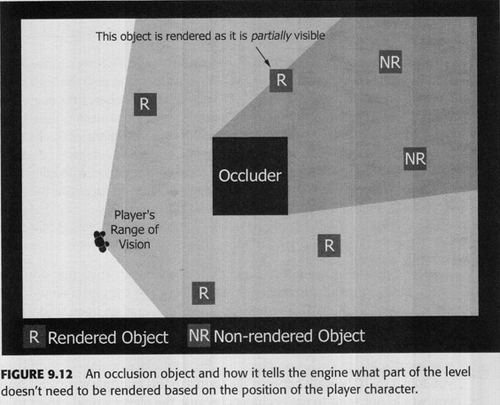
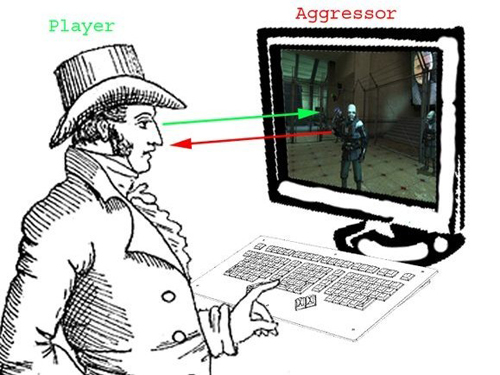
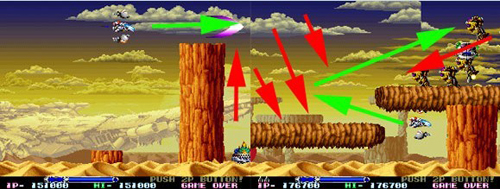
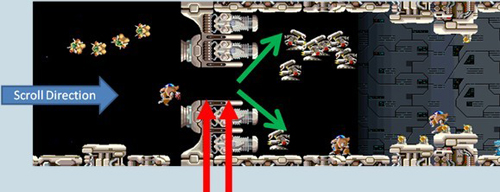

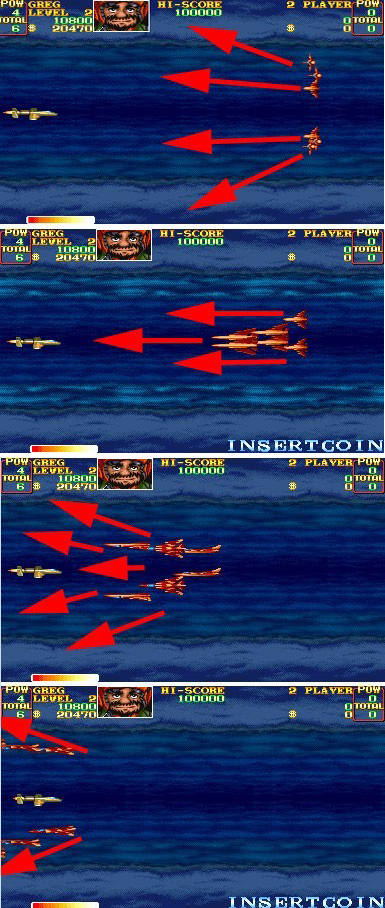
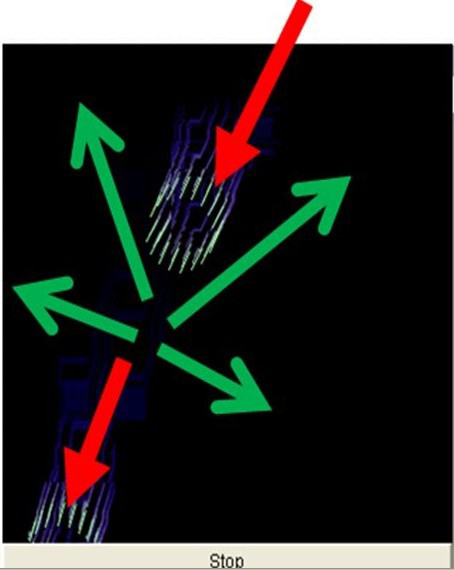















 闽公网安备35020302001549号
闽公网安备35020302001549号